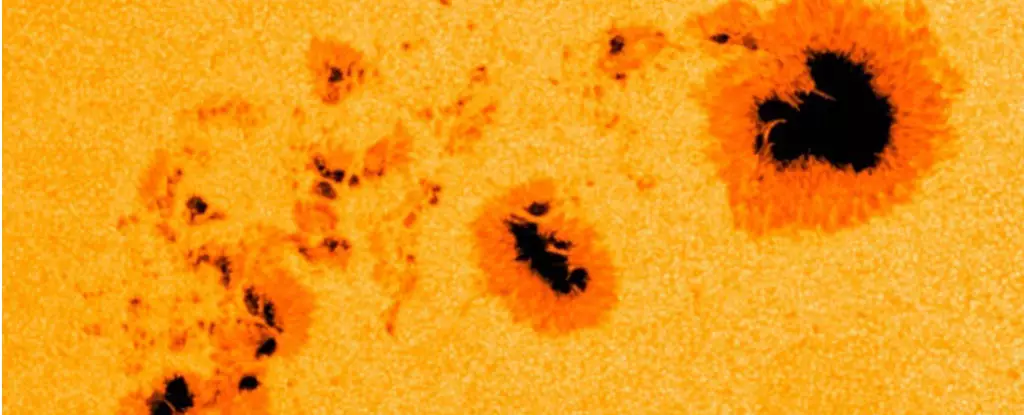Throughout history, the Sun has captivated humanity’s imagination and scientific inquiry. As the primary source of light and heat, the Sun is an essential force behind the cycle of life on Earth. Spring blooms and abundant harvests can be primarily attributed to the Sun’s relentless rays, which coax plants from the Earth. Beyond its biological significance, the Sun’s role in navigation and magnetism has equally profound implications, weaving a rich narrative through both ancient lore and modern science.
Long before the advent of modern instruments, cultures across the globe revered the Sun. Ancient civilizations recognized its life-giving properties, integrating the Sun into their spiritual and cultural practices. The mystique surrounding the Sun extends to its influence on navigation; early Chinese discoveries of magnetic compass use eventually spread to the West, altering perceptions of direction and orientation. Fast forward to the late 16th century, and William Gilbert, a key figure in the scientific revolution, made significant strides in understanding magnetism. His groundbreaking treatise established that the Earth operates as a giant magnet, a concept that paved the way for future explorations of solar and terrestrial magnetism.
In the 20th century, American astrophysicist George Ellery Hale emerged as a pivotal figure in solar research. Renowned for constructing the largest telescope of his time, Hale initially focused on the Sun. His innovative use of polarized light revealed the Sun’s complex magnetic fields, particularly in regions known as sunspots. These areas, often shrouded in darkness, possess magnetic strengths unrivaled by anything on Earth. Groundbreaking work, such as Hale’s, set the stage for modern astrophysics, which would later correlate sunspot activity with broader planetary phenomena.
The 17th century marked a notable period in solar observations, led by the illustrious Galileo Galilei. Utilizing rudimentary telescopes, Galileo meticulously documented the Sun’s surface blemishes, identifying sunspots and their rhythmic transformations. His reports indicated the Sun’s rotation and the cyclical nature of these spots. Yet, even during this vibrant period of discovery, a peculiar phenomenon occurred—the Maunder Minimum. For a stretch of 70 years, astronomers were baffled by the absence of sunspots, an enigma that persisted until their resurgence in 1715.
Solar activity is not static; it ebbs and flows in a dynamic rhythm known as the solar cycle, typically spanning about 11 years. This cycle dictates the number of sunspots—periods of intense solar activity are followed by times of relative calm. In 1859, the connection between solar events and terrestrial phenomena was dramatically illustrated by the Carrington Event. Richard Carrington, an enthusiastic amateur astronomer, witnessed a solar flare erupt, which unleashed magnetic energy that would later cause widespread disruptions on Earth, such as the ignition of telegraph systems operating without batteries. This event foreshadowed the critical need for understanding solar influences on technology, a concern that has only amplified in our modern, tech-dependent society.
The Carrington Event marked a turning point in how scientists contemplated the Sun’s impact on Earth. While many initially perceived the coincidental connection between solar flares and Earth’s magnetic storms as mere chance, subsequent findings coalesced into a more structured understanding of the solar-terrestrial relationship. Hale’s investigations decades later illustrated how magnetic forces generated within sunspots could precipitate various solar phenomena, including coronal mass ejections (CMEs) that propel vast clouds of gas into space.
These ejections are pivotal. If channeled toward Earth, CMEs can create mesmerizing auroral displays in the sky, illuminating the night with vibrant colors. However, they also pose potential threats to modern technology, with the possibility of chaos in power grids and communication networks. As we approach a peak in solar activity, predictions suggest heightened occurrences of such events for the next few years, blending both beauty and danger in a delicate imbalance.
The Sun continues to be a source of fascination, merging beauty with potential peril. Its dual nature—a nurturing force that sustains life and a powerful entity capable of triggering formidable disasters—illustrates the planet’s intricate relationship with the cosmos. As scientists delve deeper into understanding solar dynamics, we remain ever aware of the Sun’s reigning presence over our lives. The mysteries of sunspots and their magnetic fields beckon further exploration, promising to unveil secrets that have captivated humanity for centuries. In a world increasingly reliant on technology, the interplay between solar activity and terrestrial consequences is a narrative that deserves continuous attention, ensuring that the story of the Sun remains as captivating as ever.

